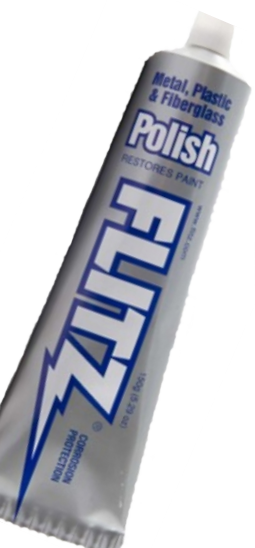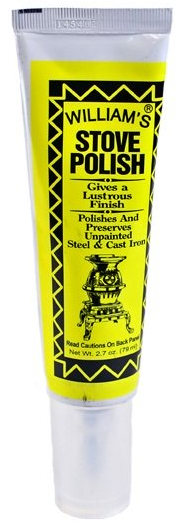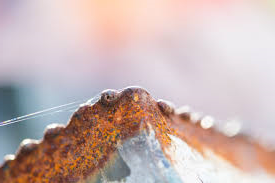Got Discoloration?

The magic of stainless steel. We all love stainless steel, how it looks, how it cleans, the durability, and its corrosion resistance. Although all these things are true, there is still the possibility of your stainless steel discoloring, damaging, and even rusting. Stainless steel isn't Superman and we want to make sure you understand what can happen with this fabulous metal. We are going to go through what happens, how to clean it if these things do happen, and also how you can prevent these things from happening. Let's roll!
Setting Expectations
Stainless steel is a well-known metal that we all adore to have. It looks fancy, cleans well, doesn't wear down or corrode, and is practically rust-resistant. This makes stainless steel wanted by all and you are probably willing to pay that extra amount just to have it. There is not a thing wrong with that and most people will tell you it's totally worth it. But stainless steel isn't perfect and can tarnish, rust, and corrode. It is rare and hard to do as stainless steel is made to last and take all the abuse it gets and still look good. We want you to be aware of the facts and are going to go over how this can happen.
 First and foremost, if you live in an area that is near saltwater, your stainless steel is in more danger of this happening. Salt is corrosive and can react with the stainless steel in a bad way. Stainless steel is made up of iron-carbon, and chromium. The magic ingredient that gives stainless steel its rep is chromium. Chromium is what forms to keep the stainless steel from rusting and all that jazz. Salt counteracts and causing a chemical reaction causing the other metals in stainless steel to become exposed and eventually causes to rust. There are things that can be done to prevent this from happening to your stainless steel. We will go over that later. Just be aware that when living near an environment that is close to the ocean, you are more susceptible to corrosion.
First and foremost, if you live in an area that is near saltwater, your stainless steel is in more danger of this happening. Salt is corrosive and can react with the stainless steel in a bad way. Stainless steel is made up of iron-carbon, and chromium. The magic ingredient that gives stainless steel its rep is chromium. Chromium is what forms to keep the stainless steel from rusting and all that jazz. Salt counteracts and causing a chemical reaction causing the other metals in stainless steel to become exposed and eventually causes to rust. There are things that can be done to prevent this from happening to your stainless steel. We will go over that later. Just be aware that when living near an environment that is close to the ocean, you are more susceptible to corrosion.
Secondly, stainless steel needs special treatment. You cannot use an everyday cleaner to keep your stainless steel clean. Using a bleach-based cleaner or abrasive cleaning tools can scratch and damage your stainless steel. Cleaning tools like steel wool or steel brush will also cause the stainless steel to become damaged and will eventually cause rust or discoloration to your stainless steel. Again, your stainless steel is not perfect but keep reading to learn how to clean your stainless steel. I'll even give you tips on how to clean it for specific items.
Lastly, there are other things that can eventually wear down your stainless steel. Among salt, there is also the natural elements. Wind, rain, and snow can also wear down your stainless steel and cause it to break down. This takes time and will not happen overnight but they can if not prevented, cause your stainless steel to discolor and rust. Taking preventative actions will reduce this risk and help keep your stainless steel looking like new for years to come. How do you prevent this you ask? Well, it's your lucky day because I will tell you all the secrets!
Come Out With It
Now that you have the general knowledge in your pocket on stainless steel, let's discuss how to clean the nasty. Cleaning your stainless steel is important and knowing how to clean it properly is even more important. You will want to take notes as if you use the wrong things to clean your stainless steel, it's bad news bears. We will go over the cleaning products that are safe as well as everyday household items that will clean and polish for you! I am going to focus on items kept outside but I'll let you know a little secret...you can do these things inside too!
 There are a couple of different practices in cleaning your stainless steel for different types of nonsense. Because stainless steel is used on things like grills, pool scuppers, and some fire features for your outdoor space, they can get all kinds of things on them. Therefore, there are different options for cleaning depending on the nasty you are cleaning up. Let me list these out for you.
There are a couple of different practices in cleaning your stainless steel for different types of nonsense. Because stainless steel is used on things like grills, pool scuppers, and some fire features for your outdoor space, they can get all kinds of things on them. Therefore, there are different options for cleaning depending on the nasty you are cleaning up. Let me list these out for you.
- Tarnish: Vinegar mixed with a mild detergent. Spray the mixture on your stainless steel item and wipe with a soft cloth to avoid scratching. Rinse with warm water and dry thoroughly.
- Discoloration: Mix club soda, vinegar, bleach-free powdered cleanser, and polisher together. Using a soft cloth wipe going with the grain of your stainless steel item. Rinse with warm water and dry. Finish off with a polish to keep your stainless steel shining in the sunlight.
- Rust: Make a baking soda and water paste. Rub the paste on the item and let it sit for a few minutes. Use a soft cloth to scrub with the grain of the stainless steel then rinse with warm water and dry. You can use any type of cleaner containing oxalic acid for rust.
- Faded Steel: Use a nonabrasive scrub like baking soda and a damp soft cleaning cloth. Rub the mixture into the problem areas on your stainless steel with the grain until clean. Spray the surface of your stainless steel with vinegar and water or a glass cleaner and wipe again. Rinse with warm water and dry completely. Use metal polish to really bring out the shine after you have cleaned the item.

Shabam! You now are aware of how to clean your stainless steel items based on the issue at hand. Also, be aware that you can use metal cleaners that are made for stainless steel as well as just good ole soap and water. Polishing your items with a stainless steel polish will also help keep your stainless steel looking fresh, clean, and brand new. We offer some metal polishes here that you can look into that are completely safe to use on your stainless steel. Click on their pictures to see more!
Who Turned Up The Heat?
Leaving your stainless steel outdoors can cause heat exposure. Then you also have a stainless steel grill that gets hot every time you use it. I know crazy right?! But really, stainless steel that is exposed to high heat can cause some discoloration depending on the temperature reached. It is true that it does have to be some extreme heat but you should still know a little about what heat damage does to your stainless steel. Also, take a look at the chart to see how the temperature can discolor your grill.
When your stainless steel has heat damage, it is possible to get some discoloration. Owning a stainless steel grill, it is important to be aware of some discoloration that can happen with heat exposure. You will most likely see this on the inside of the grill lid more than the outside since a grill is made for the heat. But sometimes it can happen to the outside of your grill. When you do get the heat discoloration it is easy to clean up with everyday household items. Look above for how to clean discoloration due to heat.
Any stainless steel item can be at risk for heat damage and can be prevented and most times restored. To restore your stainless steel, just clean the item really well and polish the item with a metal polish to keep the metal shiny. Preventing heat damage can be a little more tricky. You will want to monitor the heat coming from your stainless steel item as well as the heat that is around your item. Your grill for example, if left unattended with the lid closed can exceed 400° F and could cause the stainless steel to discolor. To prevent this from happening be more vigilant with your stainless steel items and the heat they produce or are exposed to.
Keep in mind that this can happen to any of your stainless steel products. We want you to be safe and careful with how you approach your stainless steel care. Heat is close to the number one cause of discoloration. If you are doing your own stainless steel project be aware that when welding stainless steel, discoloration is going to happen. You can restore the stainless steel with lemon juice and a soft cloth once you are finished. Then rinse, dry, and polish.
Taste The Rainbow
Discoloration can happen to your stainless steel items. This includes any of your outdoor items as they will be exposed to more than your inside items. Outdoor stainless  steel items could possibly over time become discolored or even rust. Although stainless steel is made to withstand and is very durable, it can still happen. You will have more of a risk of discoloration living close to saltwater. The discoloration process can be expedited in this environment and you should take preventive steps to avoid this happening.
steel items could possibly over time become discolored or even rust. Although stainless steel is made to withstand and is very durable, it can still happen. You will have more of a risk of discoloration living close to saltwater. The discoloration process can be expedited in this environment and you should take preventive steps to avoid this happening.
The discoloration of steel can be anything from brown to blue depending on the exposure and what your steel is exposed to. The brown color you see on your stainless steel is most likely rust on the surface of your stainless steel. This can easily be cleaned off and prevented going forward. Stainless steel creates its own protective layer which is why it is so awesome. Also, some heat exposure can give your stainless steel a rainbow effect. Just remember that although super-duper strong and works against the natural wear and tear of metal, it's not perfect.
We use 304 stainless steel on our products. This particular steel is made to be outdoors and take a lot more than most stainless steel. Again, it's not perfect though. Another leading cause of stainless steel discoloration is using violently abrasive chemicals that will destroy its protective oxide layer. The oxide layer is what makes stainless steel what it is. Some abrasive chemicals that can endanger your stainless steel are salt, chlorides, and bleach. These can cause your stainless steel items to discolor rapidly.
Paging Dr. Prevent
You're probably wondering how in the world do I prevent this from happening?! Well luckily for you, I have answers! Taking preventative measures will for sure help your  stainless steel stay shiny and presentable at all times. How about we go through some shenanigans on how to prevent the beast from your stainless steel!
stainless steel stay shiny and presentable at all times. How about we go through some shenanigans on how to prevent the beast from your stainless steel!
- Don't use salt, bleach, or mineral acid on your stainless steel.
- Remember that if you're close to saltwater, corrosion is bound to happen over time. Clean your items at least every 3 months!
- Don't expose your stainless steel to concentrated chlorine. This will cause discoloration even if the chlorine is diluted.
- Don't use any steel or metal brushes! If you need to scrub with more than a soft cloth, a non-woven abrasive Scotch-Brite scouring pad will do wonders.
- Regularly clean and oil the stainless steel item and moving parts will keep the items operating.
Taking these precautions on your outdoor stainless steel grill or even fireplace doors will keep them looking new and working perfectly. You may also use these tips on your indoor stainless steel items! Consider using the natural items to keep your items clean and for preventative measures as some chemicals used in cleaners can be harmful. If you do use any chemical cleaners, please remember to protect your skin and wear a mask to avoid inhaling the products.
To End It All...
As stainless steel is a metal, like all metals eventually rust or discolor naturally. Stainless steel will not corrode or rust as easily due to what it's made of. The rate that stainless steel corrodes or discolors varies much on how it's cared for and the steps taken to prevent. Take some time to make sure that you're properly caring for your stainless steel. In the long run, the care you put into your stainless steel will pay off. We hope that we were able to give you the tools needed to up your stainless steel game! Feel free as always to reach out if you have more questions!
FAQ's
How do you remove tarnish from stainless steel?
- Using vinegar and mild detergent with a soft cloth will clear up the tarnish. You can also use vinegar for the tough spots left behind or even a metal cleaner!
How do you fix discolored stainless steel?
- Rub some club soda, vinegar, and polish with a soft cloth. Using the soft cloth, going with the grain of the stainless steel, rub until the discoloration has been removed. Rinse with warm water and dry.
How do you clean oxidized stainless steel?
- Make a paste with baking soda and water or a cleaner containing oxalic acid. Place the paste on the stainless steel and let sit for a few moments. Rub with a soft cloth until clear. Rinse with warm water and dry.
How do you restore faded steel?
- Take a non-abrasive scrub (baking soda) and place it on a damp cleaning cloth. Rub your problem areas on your stainless steel until clean. Spray the area with a vinegar/water mixture and wipe again. Rinse with water and dry.
How do I prevent stainless steel from tarnishing?
- You will want to keep your stainless steel clean! This is the most important. If you don't live near saltwater, clean your stainless steel every 6 months and if you do, clean every 3 months. Oil any moving parts on your stainless steel to keep them operating correctly so they don't get rusty.
No posts found




